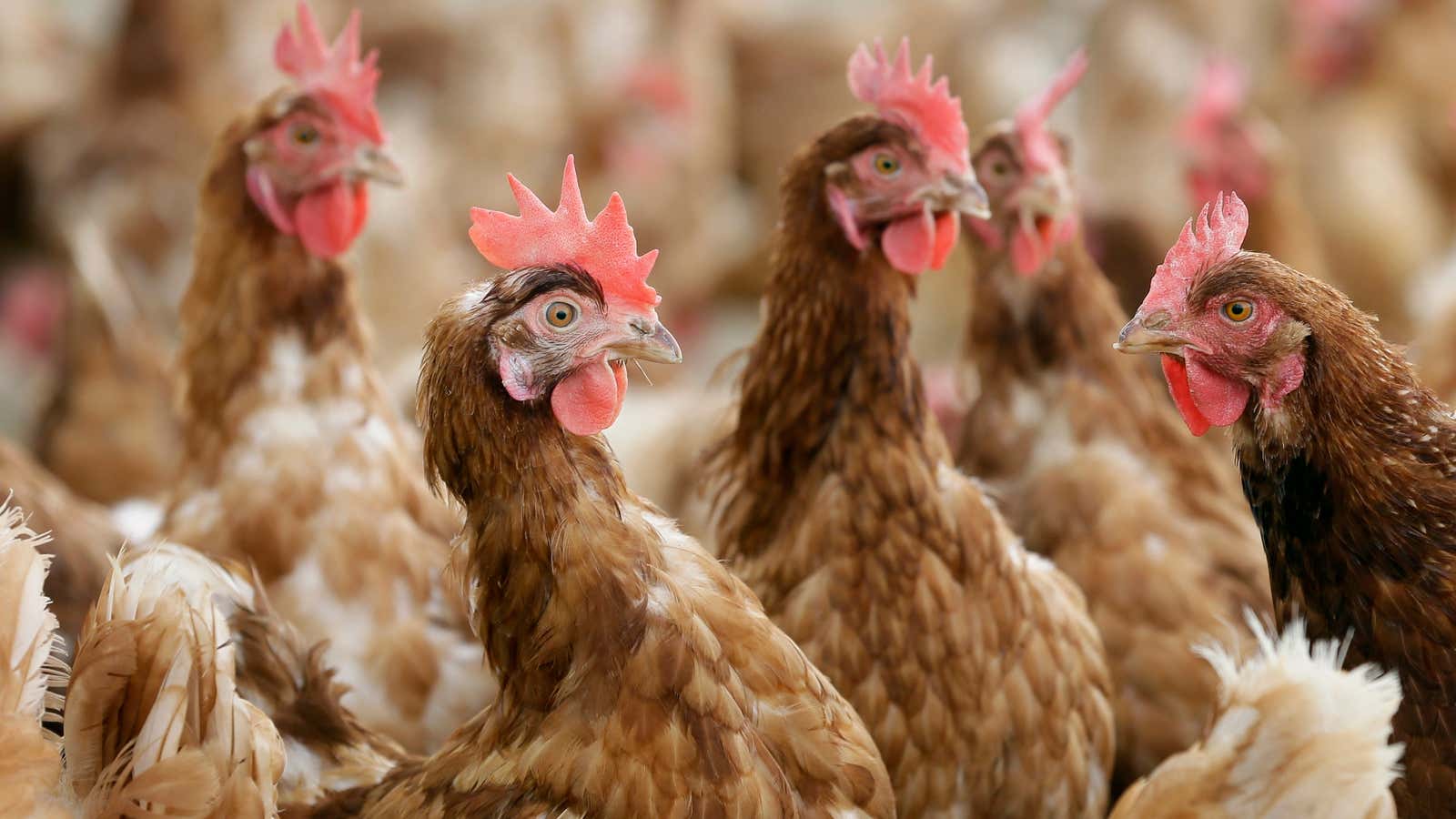In 2001, just after graduating from college in Washington, DC, I booked a trip to Las Vegas. I wasn’t celebrating my newfound freedom with gambling or boozing. I was off to attend a conference about eggs.
In my suitcase were dozens of VHS tapes—copies of Hope for the Hopeless, a documentary my friends and I had made about conditions for chickens in an egg mega-factory in Maryland. The video showed birds locked in cages so small, they couldn’t ever spread their wings. Dead birds rotted in cages with their surviving cage-mates. Some animals became trapped in the wires of their cages, dying of dehydration just inches from water.
At the time, most people didn’t care about cage-free eggs—least of all the egg executives whom I pressed to take free copies of the documentary throughout the conference. (As Upton Sinclair famously observed, “it is difficult to get a man to understand something when his salary depends on his not understanding it.”) One speaker told me that there was simply no way that the industry would move toward a cage-free future. Americans wanted cheap eggs, he said, and caged birds were the only way to keep prices low.
Fifteen years later, the egg men have been proven wrong. Nearly every major egg buyer in our nation—from McDonald’s and Denny’s to IHOP and Costco—has announced policies to go 100% cage-free with their eggs. Voters and state lawmakers are also taking action. Egg Industry magazine itself has said that a shift to cage-free housing “may be the most significant development of 2016 for US egg producers.” That’s a big change in a relatively short span of time. And the evolution of political and public opinion over cage-free eggs offers a lesson in the power of social media, video streaming and other new technologies to affect change in animal welfare.
It’s been clear for a long time that cage-free is the way to go. Cage-free conditions offer real improvements over cages. Hens can walk, spread their wings, perch, nest and engage in other important behaviors denied to caged hens. Unfortunately, the label “cage-free” doesn’t necessarily mean cruelty-free, but it’s a big step in a better direction. It’s also better for food safety, with studies showing that cage confinement causes higher rates of Salmonella than cage-free systems.
But it took a lot of advocacy to change the multi-billionaire dollar egg industry. Repeated whistleblowing exposés have helped sway public opinion. A few notable examples include the Nightline exposé of conditions at Hillandale Farms, an egg supplier to Costco, and the PBS Online Film Festival’s short documentary The Story of an Egg. Popular Netflix documentaries including Food, Inc. and Fresh have also raised awareness about the issues with corporate agriculture.
Ten states in the US now ban some of the most inhumane forms of animal confinement, several including rules on the treatment of egg-laying hens. California’s Proposition 2, which passed in 2008 and took effect in 2015, was perhaps the most important of these laws. The law requires farmers to keep chickens in spaces large enough to extend their wings and turn around. And now more than 130,000 voters in Massachusetts have now signed petitions to put a similar measure on this November’s ballot. At this rate, it’s possible that the only battery cages you’ll be able to find in our nation a decade from now will be in a museum.
How did the landscape shift so quickly? In part, the rise of social media has enabled people who care about animal welfare to share information faster than ever before. When my friends and I made Hope for the Hopeless, we were thrilled to sell about 1,000 VHS copies. Today, hundreds of thousands of people can read and share articles and videos the same day they are released. As it turns out, animal advocates didn’t have to change anyone’s mind about standard egg industry practices. The public just needed more access to information about chicken’s inhumane treatment.
The more Americans learned about how eggs are produced, the greater their concerns over animal cruelty became. The changing tides pushed both lawmakers and corporations to act.
If this kind of change can happen in just 15 years, there’s reason to hope for many more animal protection advancements in the years ahead. We’re in the midst of a cultural revolution in our views of the animals with whom we share this planet. The old view—that animals are here solely for us—is being replaced by a new view: that animals are here with us. From Ringling Brothers retiring its iconic elephants from the circus to SeaWorld ending its orca breeding program, the changes around us are palpable.
Hundreds of years ago, Galileo and Copernicus helped us to see that we aren’t the center of the physical universe. Now our perspective is shifting once again as we realize that humans may not be at the center of the moral universe, either.
